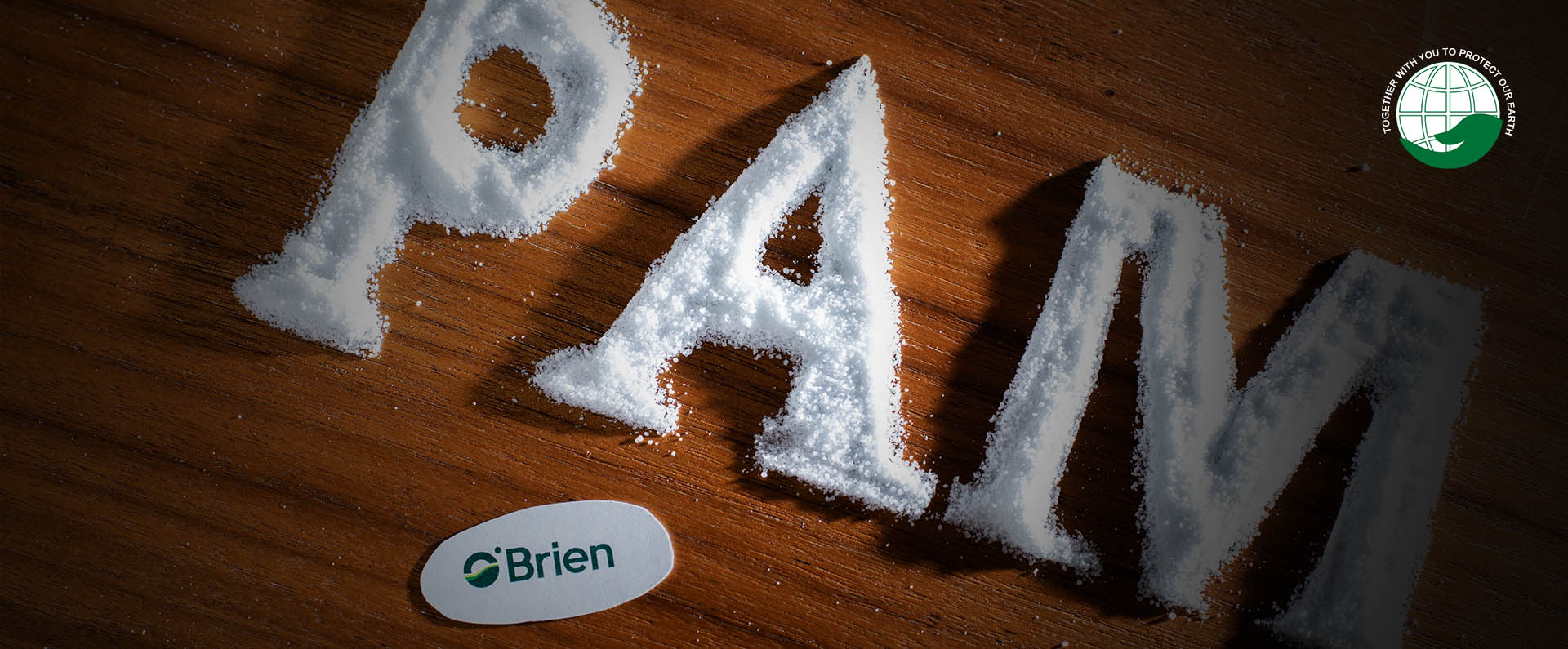What is PAM Chemical? What is the chemical structure of PAM and what types are PAM?
What are the properties of PAM as well as the use of the chemical PAM? How to use chemical PAM? What should be noted when using this chemical PAM?
Wastewater treatment chemicals are a very familiar phrase to us and of which, PAM is one of the most used chemicals for water treatment. In addition to common knowledge about PAN chemicals. Today Oubo Chemical will give you more detailed information so you can look over the chemical integrity of this PAM.
Come to the first concept “WHAT IS PAM CHEMICAL?”
WHAT IS PAM CHEMICAL? FACTORY STRUCTURE OF PAM CHEMICAL
What is PAM Chemical?
PAM is the chemical with the chemical formula C3H5N. This is a polymer that is water-soluble but insoluble in most organic solvents. PAM is a white, odorless solid with strong hygroscopic properties.
Pam also has different names such as polyacrylamide, Anion or Anionic Polyacrylamide,
PAM chemical is the chemical used in industry to treat wastewater belonging to the sedimentation group because it can reduce the frictional resistance between liquids, and can be divided into anionic, cationic, non-ionic and amphoteric type.
CLASSIFICATION PAM CHEMICALS
PAM chemicals are classified into the following categories:
- PAM Anionic: This is the chemical used for wastewater treatment with high ionic content in water with pH> 7 and high turbidity.
- PAM Cationic: This is a chemical used for wastewater with high content of organic ions in water with pH <7.
- PAM Non – ionic: This is a chemical used for the separation of ionic mixture of organic and inorganic substances.
- PAM ion: This is the chemical used for the first step before treating water for difficult wastewater.
CHEMICAL CHARACTERISTICS OF PAM CHEMICALS
CHEMICAL CHARACTERISTICS OF PAM CHEMICALS
- PAM chemical exists in the form of white powder or fine particles. Softening temperature is 210 degrees. PAM has strong hygroscopicity and is well soluble in water but insoluble in solvents.
- The PAM wastewater treatment process does not change pH and salt concentration in water.
- CAS Number: 9003-05-8
- EINECS number: 236-79-8
- Molecular weight: 5 – 24,000,000.
- Packing: 25 kg / plastic bag.
- There are two processes that occur if you add polymer to wastewater:
- Flocculation process: Colloidal particles are adsorbed by the polymer and no longer stable.
- Flocculation process: The broken colloidal particles will stick together into small cotton balls and cluster into larger, settable clusters.
WHAT ARE THE USE OF PAM CHEMICAL?
WHAT ARE THE USE OF PAM CHEMICAL?
The main use of PAM is mainly used to treat wastewater as a flocculation aid for suspended particles in wastewater .. As mentioned above, that process will be carried out through two processes. That process is flocculation and flocculation.
- PAM is widely used for a variety of industrial processes involving paper, petrochemical, electroplating, textiles, chemical food oil fields, pharmaceuticals, leather, wineries, and slaughterhouses. .
- PAM is used for water treatment of mining industries, including production of coal, lead, dioxide, titanium, gold, zinc, iron, sand, phosphoric acid, silver, nickel, copper, steel, gravel. , aluminum uranium as well as processed potassium.
GUIDE TO USE PAM CHEMICALS FOR WASTE WATER TREATMENT
PAM chemicals are dissolved in a certain rate according to the instructions for use. Ideal PAM usage rate in water ensures effective treatment quality is 0.01% – 0.1%. For about 100ppm – 200ppm PAM deposition aid in wastewater need to be treated.
However, this ratio can be changed depending on the input water quality. Should pay attention to water quality.
NOTES ON PAM CHEMICALS
The hazard of PAM chemicals
- Basically PAM does not carry much toxicity, however, PAM can still cause irritation and discomfort for eyes and skin. Workwear should be used when handling them.
- PAM chemicals when dissolved in water should be gently stirred.
- The materials used to store PAM chemicals are stainless steel, glass fiber, resin, epoxy.
- Materials not used to store PAM chemicals are Iron, copper, aluminum.
- Shelf life 24 months without opening the bag and in dry environment, temperature below 40 degrees C.
Note when storing PAM chemicals
WHERE TO BUY PAM CHEMICALS IN CHINA
If you are looking to buy PAM CHEMICAL products for wastewater treatment in the market, do not miss Oubo Chemical. We are one of the most reliable suppliers of chemicals and laboratory tools and equipment in China. In addition, you also receive enthusiastic advice from a team of skilled and extremely enthusiastic staff. We are a place where customers trust absolutely when there is a demand for products related to the field of Laboratory chemicals - equipment - laboratory tools .
Please find Oubo Chemical by contacting directly at oubochem.com if you have any need.
With extremely useful information about What is PAM Chemical? What is the chemical structure of PAM and what types are PAM? What are the properties of PAM as well as the use of the chemical PAM? How to use chemical PAM like? What should be noted when using this chemical PAM?
We hope to provide you with some knowledge of PAM chemicals.
Post time: Sep-09-2020








